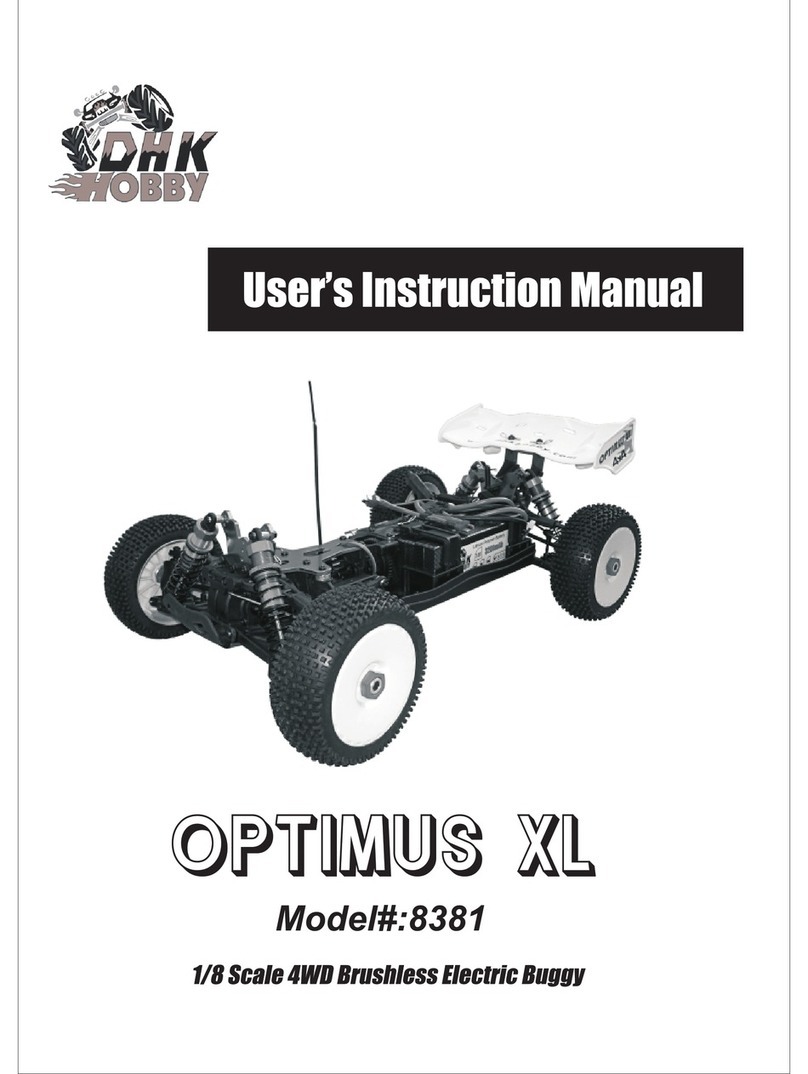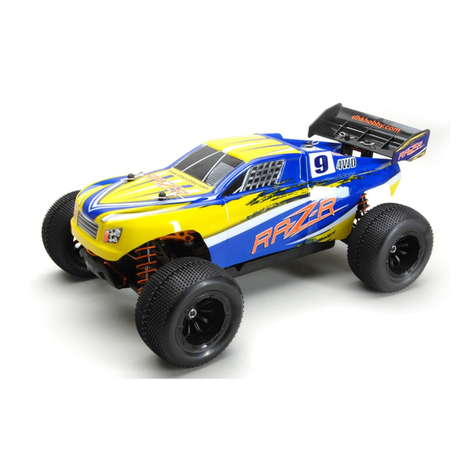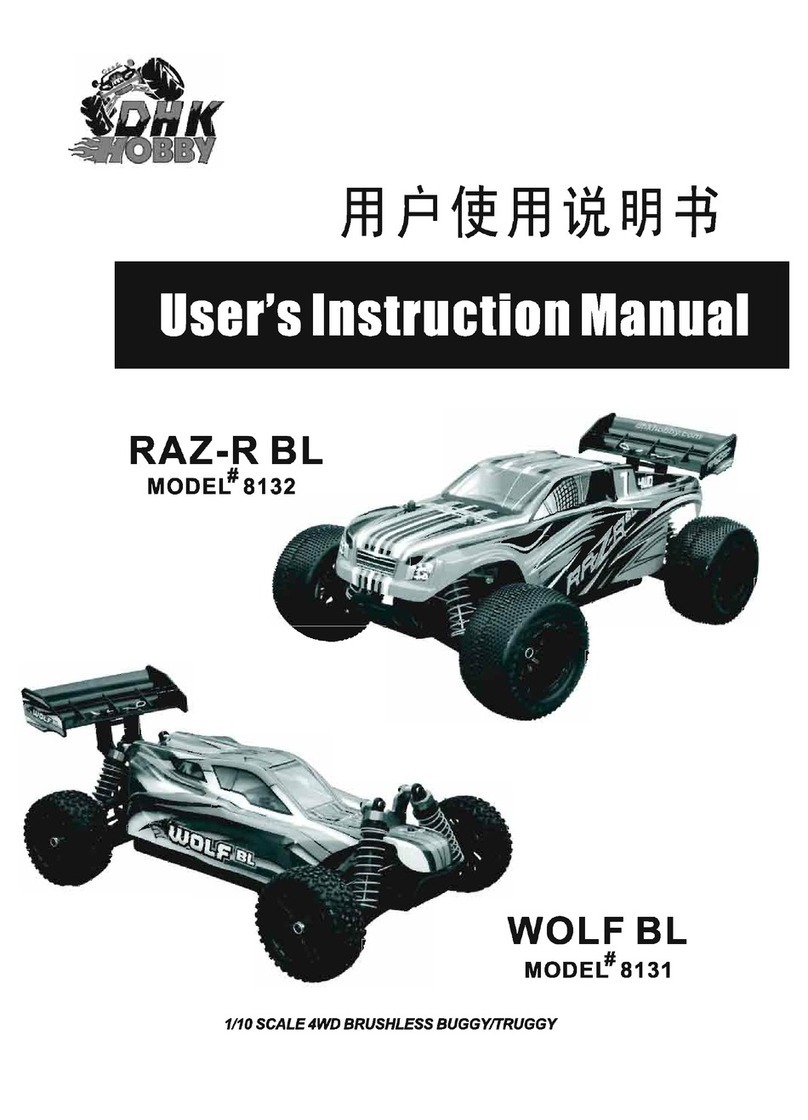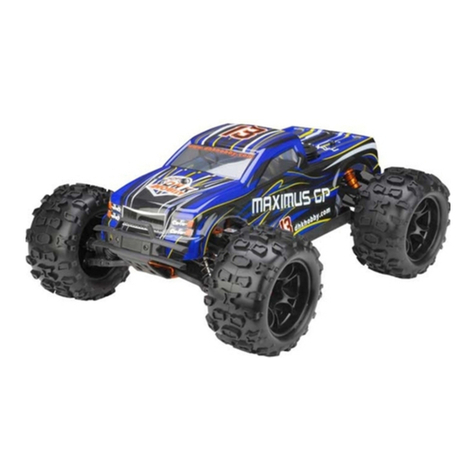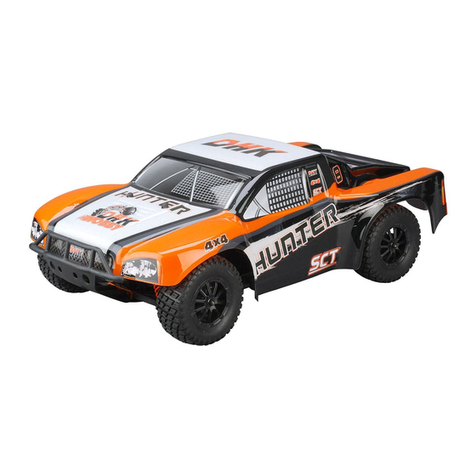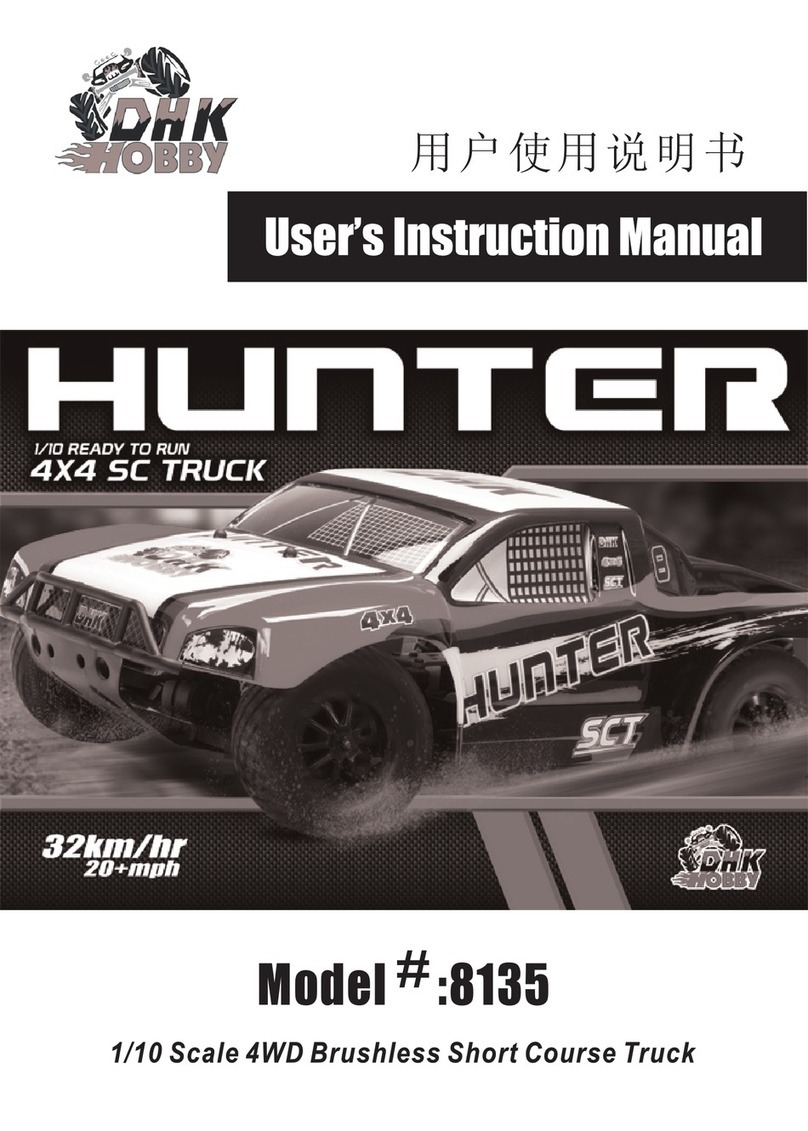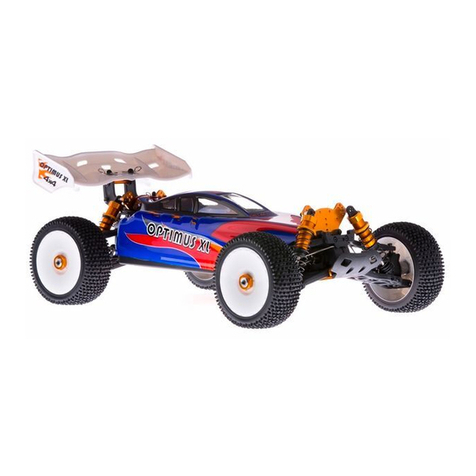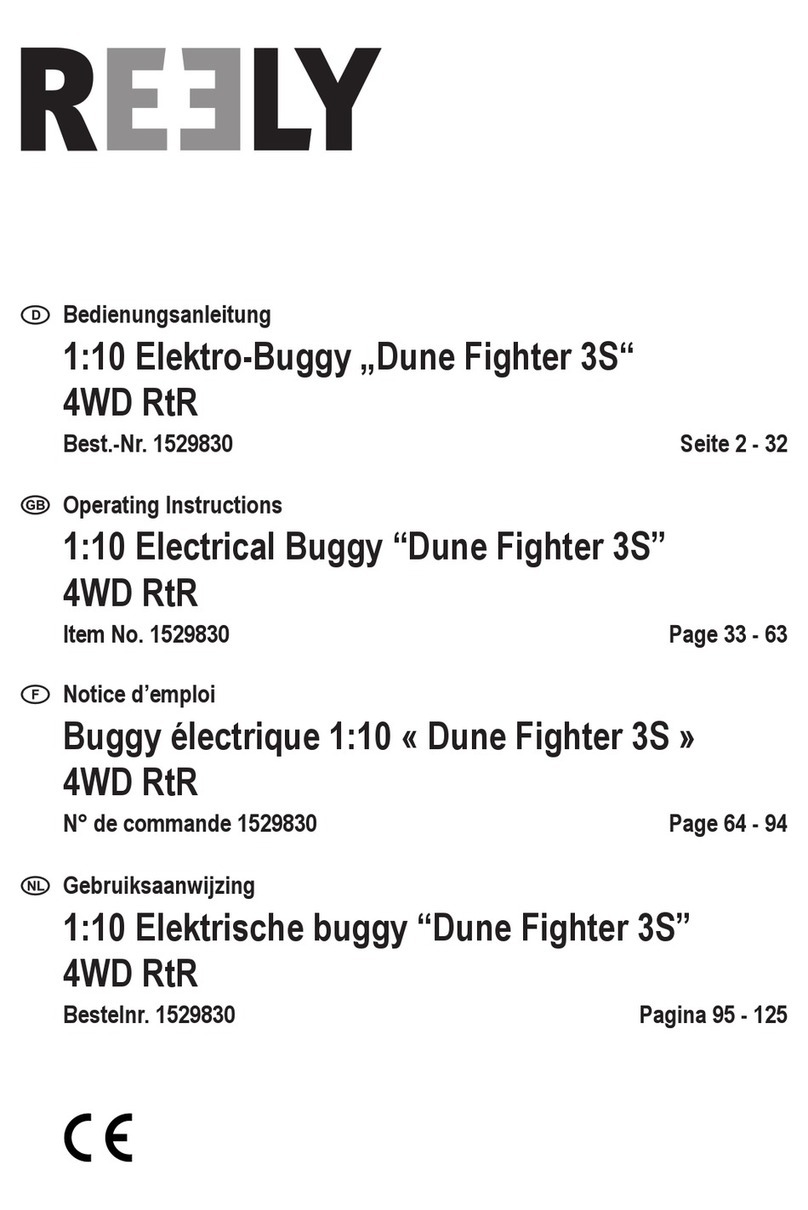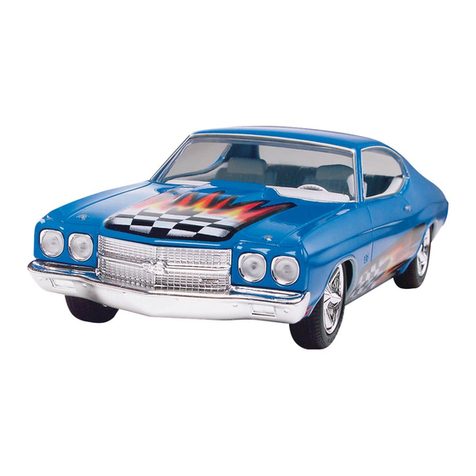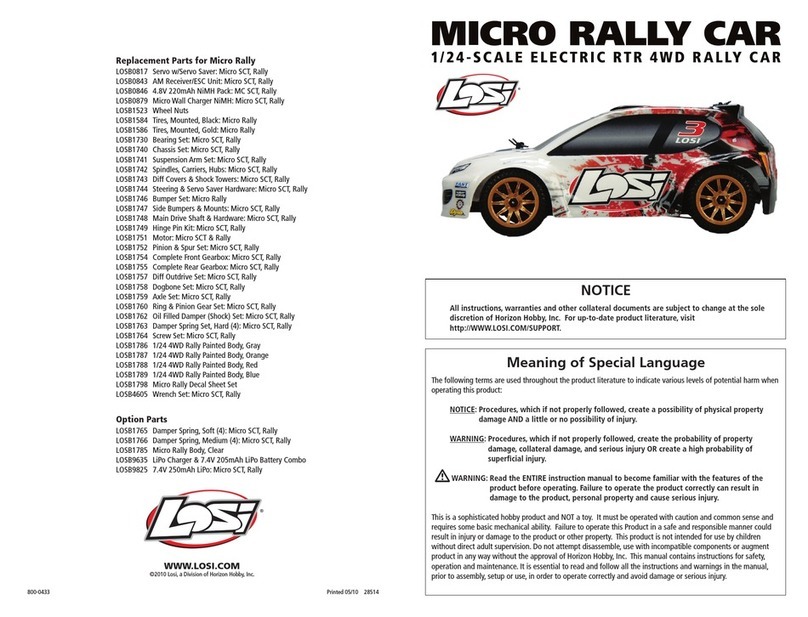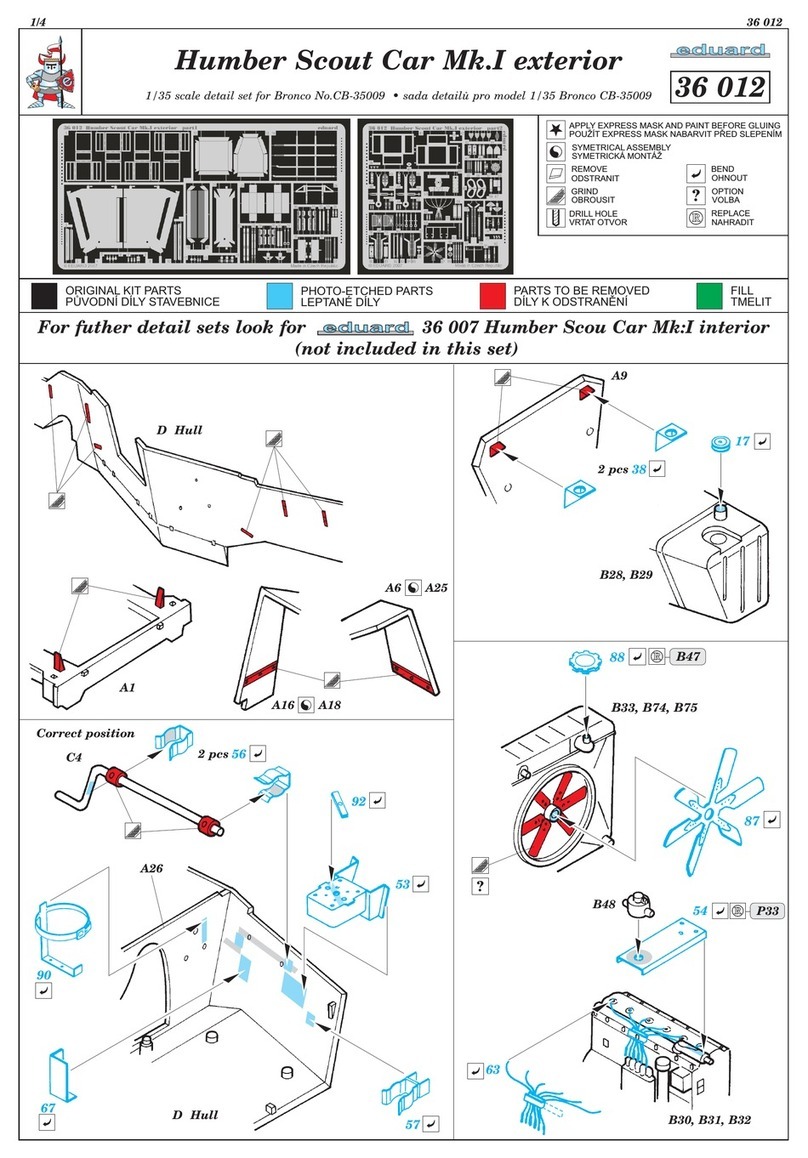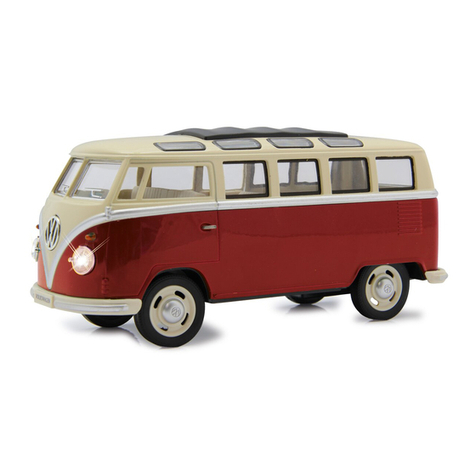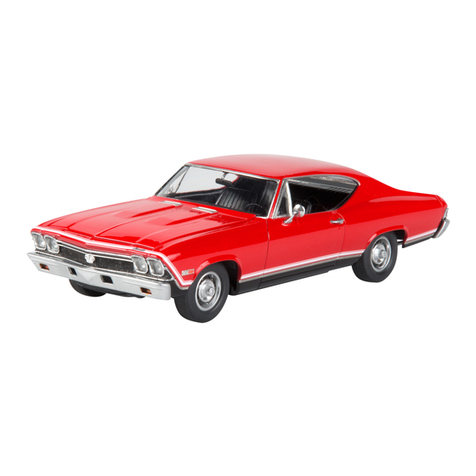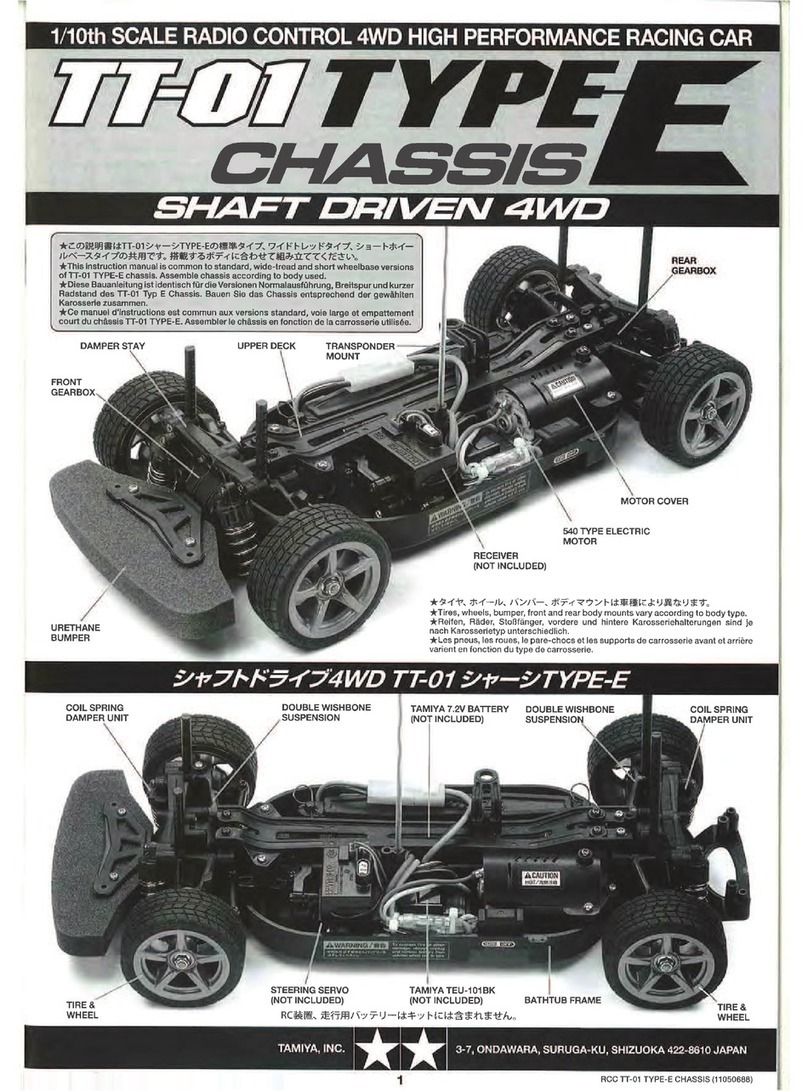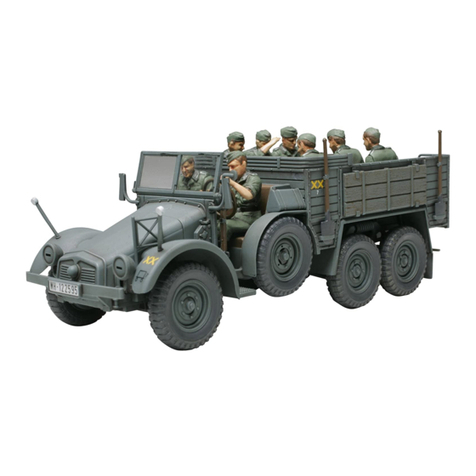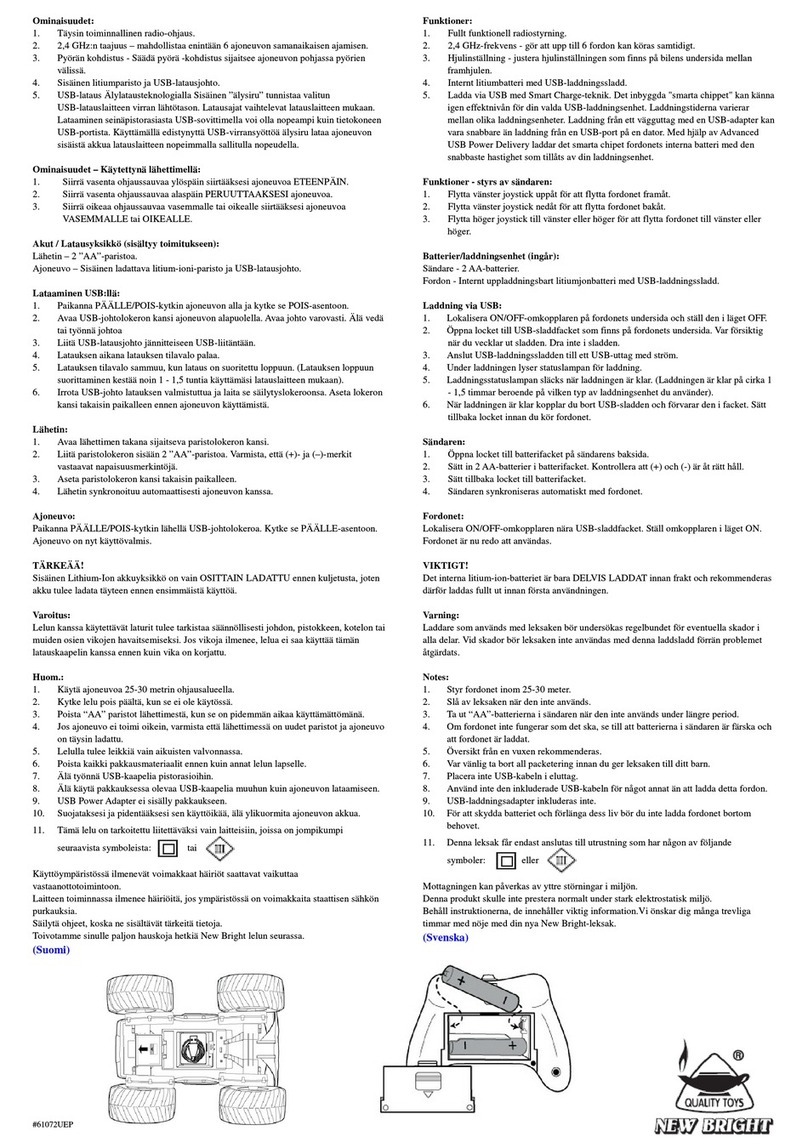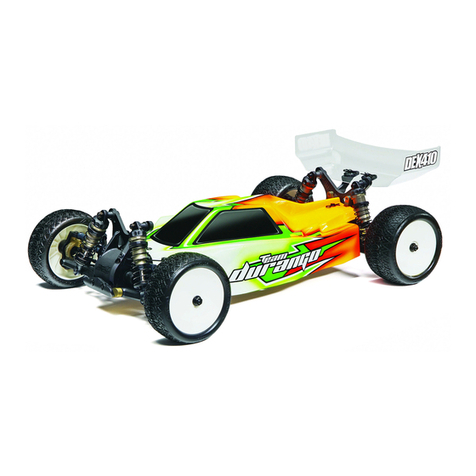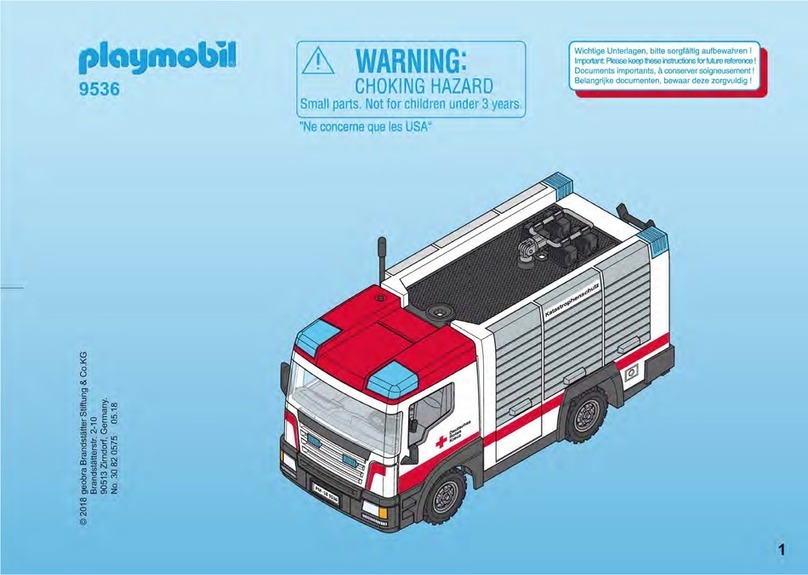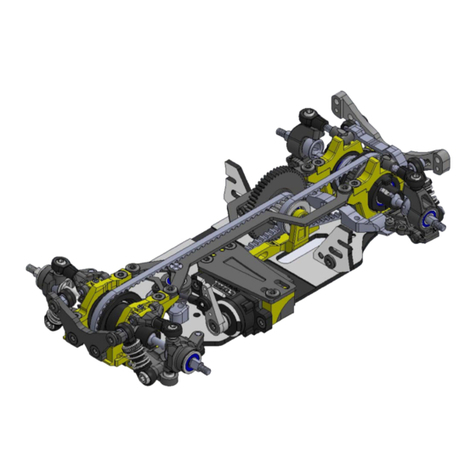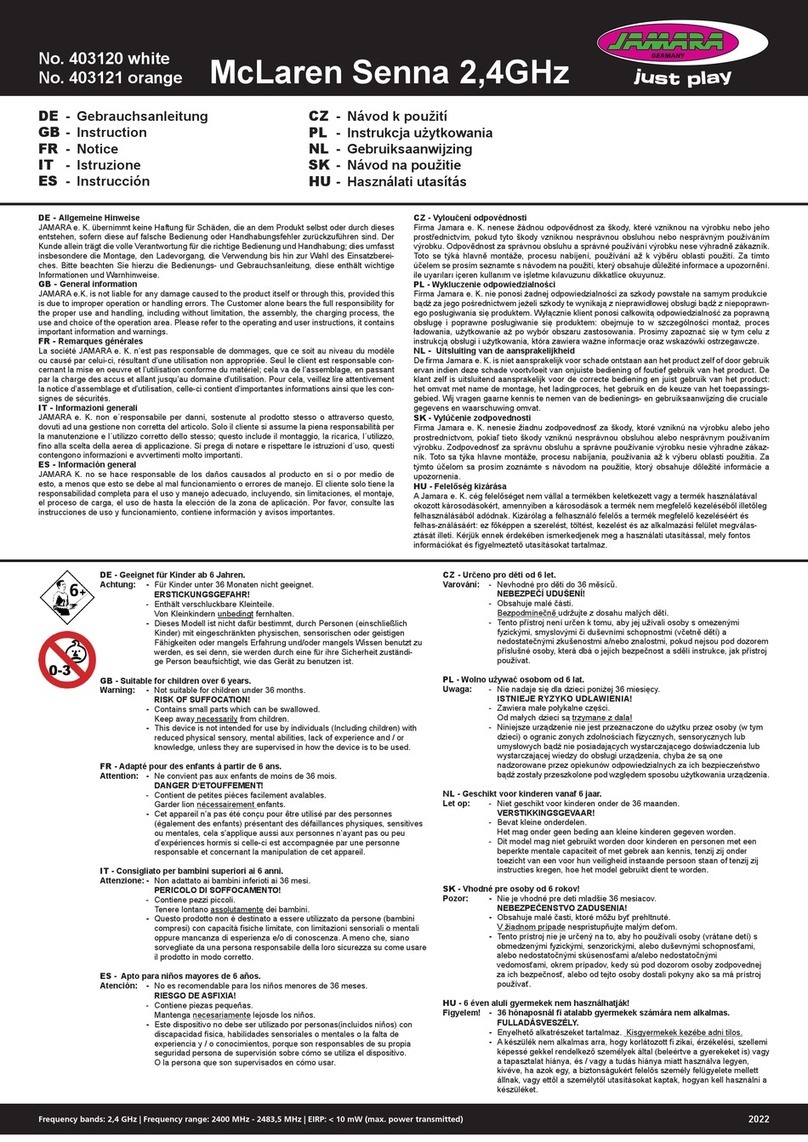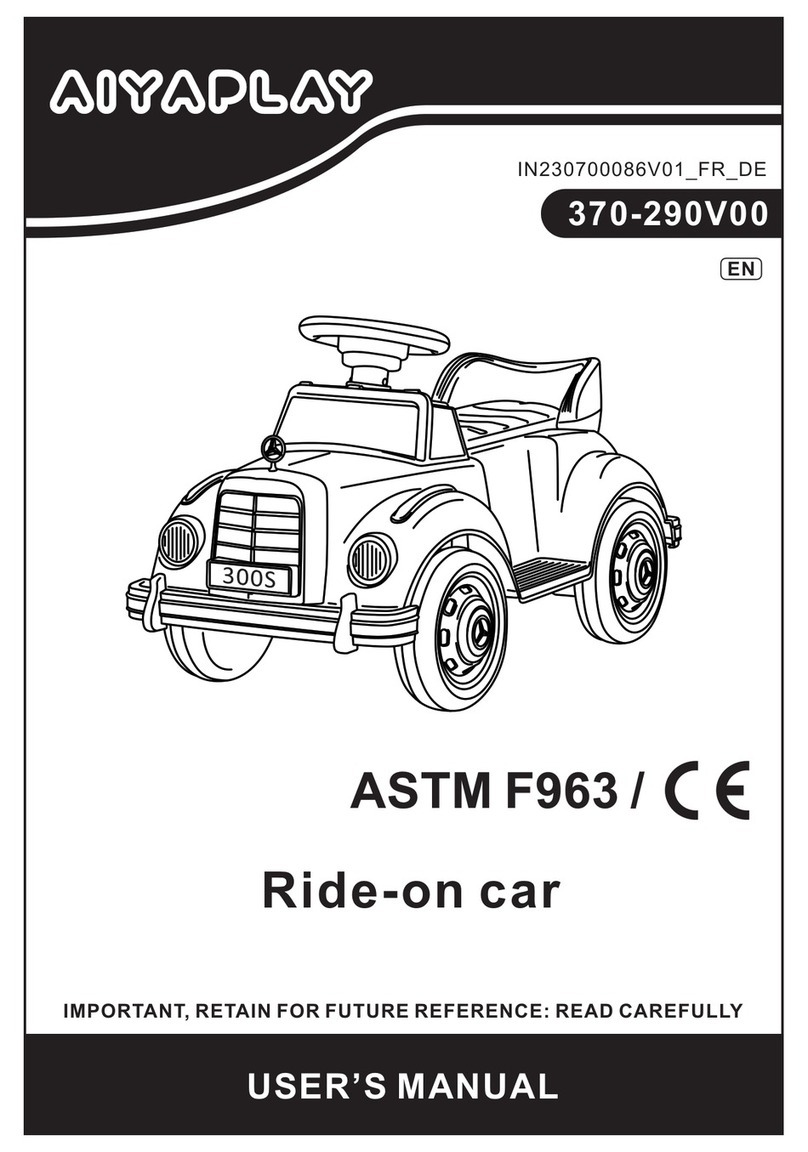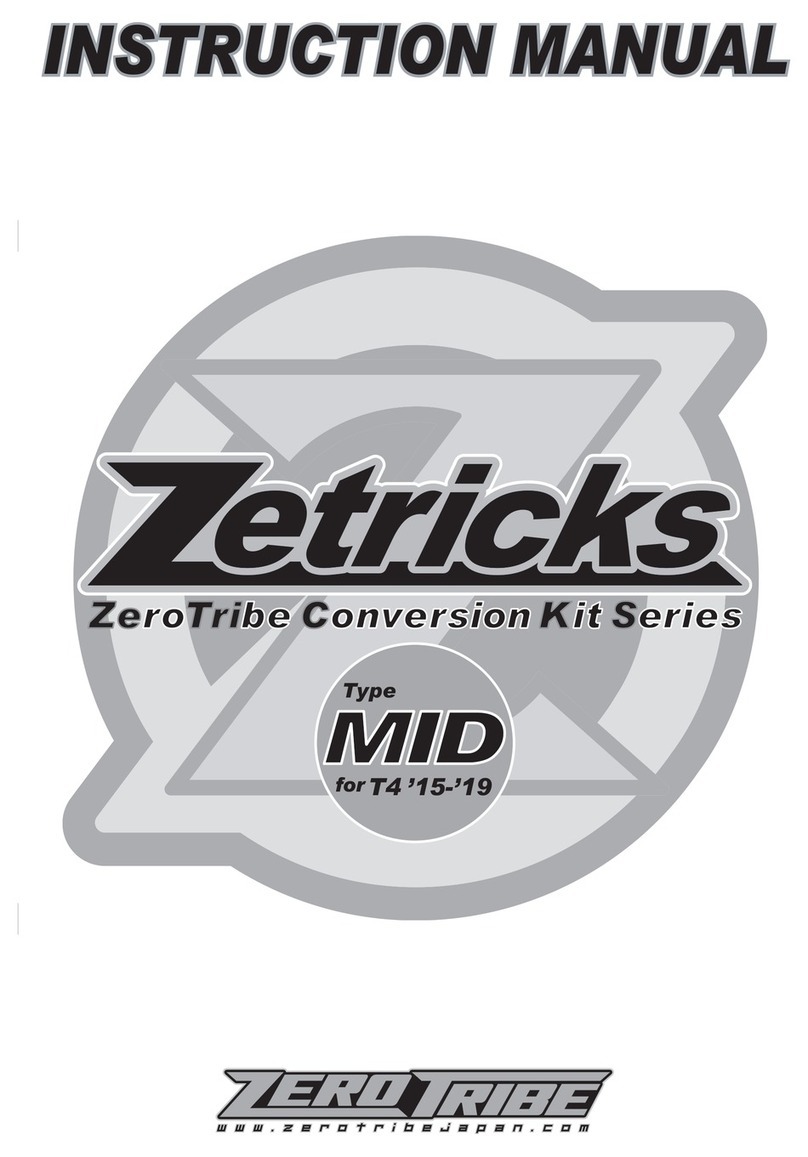Servo (6kg)
2.4GHz transmitter
D303
D302T
Parts List
Number
8381-104
8381-100
8381-101
8381-102
8381-103
8381-105
8381-106
8381-107
8381-108
8381-109
8381-110
8381-111
8381-112
8381-113
8381-114
8381-115
8381-116
8381-117
8381-118
8381-119
8381-206
8381-207
8381-208
8381-305
8381-306
8381-309
8381-310
8381-50L
8381-50R
8381-501
8381-502
8381-503
8381-601
8381-602
8381-603
8381-604
8381-605
8381-606
8381-608
8131-6Z0
8381-6Z2
8381-6Z1
B head screw-coarse thread(BB3*16mm)
Flathead screw-coarse thread(KB2.6*10
mm) (16 pcs)
Desc
Assembly of diff gear box
Diff set
Diff outdrive/pins (dia 2*10mm)
Pins(dia 2*10mm) (16 pcs)
Crown gear-41T (large)/pinion gear-11T
(small)
Diff case set/diff case cover/diff gasket
Washer-A/washer-B (8 pcs each)
Gear-18T (2 pcs)/gear-12T (4 pcs)
O Ring(dia 8mm * dia 2mm) (16 pcs)
Ball bearing(dia 10mm * dia 15*4mm)
(2 pcs)
Diff pins(dia 4*25.8mm) (4 pcs)
Assembly of the pinion gear
Flathead screw(KM2.6X6mm) (16 pcs)
Ball bearing(dia 8mm * dia14*4mm)
(2 pcs)
Pins(dia 2*8mm) (16 pcs)
Pinion gear outdrive/pins(dia 2*8mm)
Ball bearing(dia 5 mm * dia 11*4mm)
(2 pcs)
Diff gear box-F/R
(16 pcs)
Center diff gear box/center diff gear box
plate
B head screw-coarse thread
(BB3*20mm) (16 pcs)
Center outdrive set
Shock ball (8 pcs)
M3 nylon nut (8 pcs)
Shock shaft (4 pcs)
Shock spring (4 pcs)
Assembly of upper sus.arm-Left
Assembly of upper sus.arm-right
Upper sus.arm ball (4 pcs)
Upper sus.arm/rod end (2 sets)
Upper sus.arm linkage (2 pcs)
Brass washer (4 pcs)
Servo saver bushing/adjustment ring
Servo saver spring (4 pcs)
Servo saver sus. Arm-upper/lower/
B head screw-coarse thread(BB3*12mm)
(16 pcs)
Servo saver assembly-complete
Shaft (2 pcs)
Assembly of steering linkage (2 pcs)
Plastic rod end (8 pcs)
Steering linkage (2 pcs)
Double way ball end (8 pcs)
Upper sus.arm mount-rear/suspension
mount
B head screw-coarse thread(BB3*14mm)
(16 pcs)
B head screw-coarse thread(BB3*10mm)
(16 pcs)
Lower sus.arm-front (2 pcs)
Drive shaft set/revolving shaft (2 sets)
Ball bearing(dia 6mm * dia 12*4mm)
8381-6Z3
8381-701
8381-702
8381-703
8381-706
8381-707
8381-710
Number Desc
steering sus. Arm
6
8135-801
8135-9M1
Rear bumper/upper sus.arm mount-front
Motor mount
Shock tower (2 pcs)
Pivot ball mount (4 pcs)
Upper sus.arm shaft (4 pcs)
Lower sus.arm plate-front
C-hub screw bushings (16 pcs)
T head hex screws (TM4*12mm) (16 pcs)
T head hex screws (TM4*22mm) (16 pcs)
B head screw-coarse thread(BB3*18mm)
(16 pcs)
B head screw(BM3*56mm) (8 pcs)
B head screw(BM3*43mm) (8 pcs)
Body post holder/body post
B head screw(BM3*24mm) (16 pcs)
Lower sus.arm-rear (2 pcs)
Rear hub-L/R
B head screw(BM3*18mm) (16 pcs)
B head screw(BM3*10mm) (16 pcs)
Pin-A(dia 1.5mm) (16 pcs)
Motor gear-15/Lock nut(M3*3)
Servo mount
Servo arm-B (2 pcs)
B head screw(BM2.6*6mm) (12 pcs)
Assembly of steering tie rod
Steering tie rod (2 pcs)
Central drive shaft-A
Central drive shaft-B
Antenna tube (3 pcs)
Pin-B(Φ1.2mm) (16 pcs)
Screw washer(4 pcs)
Flathead screw(KM3X10mm) (16 pcs)
Flathead screw-coarse thread
Upper deck-A
Upper deck-B
Flathead screw(KM4X11.5mm) (12 pcs)
(KB3*10mm) (16 pcs)
C-hub (2 pcs)
8381-714
8381-717
8381-718
8381-719
8381-721
8381-723
8381-724
8381-725
8381-726
8381-727
8381-728
8382-703
8382-705
8381-801
8381-802
8381-803
8381-805
8381-807
8132-9M1
8381-9S1
9381-9B4
8131-9S2
8381-9Z0
8381-9Z1
8381-005
8381-006
8381-008
8381-009
8381-010
8381-011
8381-012
8381-016
8381-017
8381-024
Body nerf bars (left & right)
8135-001
8135-002
8135-003
8135-004
8135-005
8135-006
8135-007
Tire complete (black rims) (2 pcs)
Chassis
Upper deck mount-F/R
Battery mount-C/D
Waterproof receiver box
Tires with foams (unglued) (2 pcs)
8331-200
8331-201
8331-001
Central diff gear box(complete)
Central diff set
Printed body (PC) (W/body decals)
8331-002 Body decals (Hunter BL)
8135-008 Wheels (2 pcs)
Servo saver assembly-complete
Steering plate
8135-600
8135-601
Wheel axle (2 pcs)
8135-701
Steering arm (2 pcs)
8135-702
8135-703 Hex adapter (4 pcs)
Spur gear-53T(plastic) (2 pcs)
Shock absorber complete (2 pcs)
8135-203
8135-301
Clear SCT body(PC) (W/body decals
and window cutout)
8331-001C
8135-704
8135-705
Set screws-M4 (4 pcs)
Front bumper/upper sus.arm mount-front
(2 pcs)
